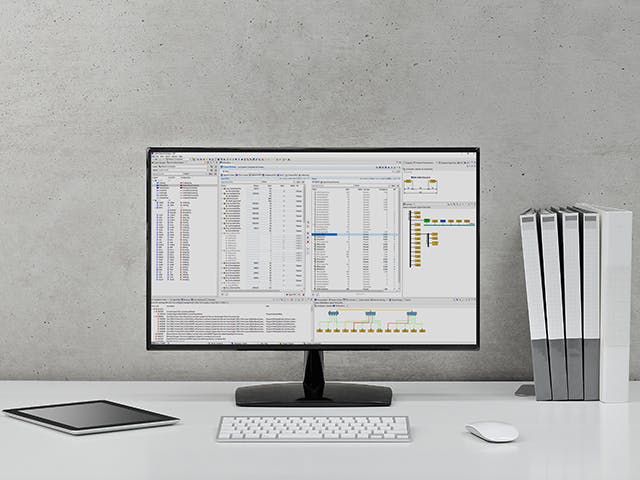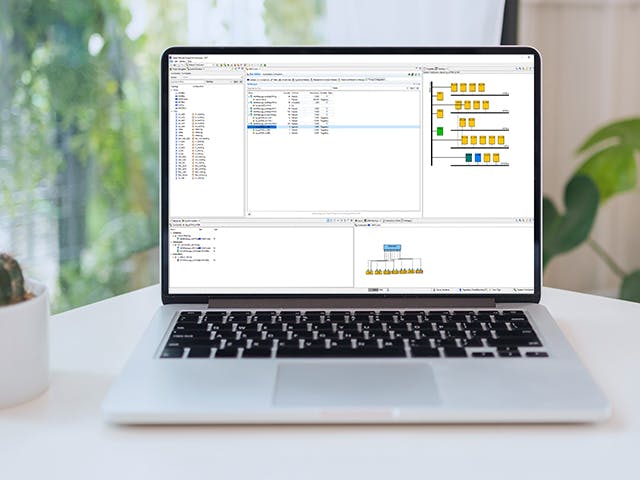
Calendrier critique pour la sécurité
Tirez parti de méthodes avancées pour aborder la nouvelle dimension des systèmes complexes en temps réel en utilisant une communication distribuée avec un timing adéquat.
Réduction de 50 % du temps de conception de réseau
Automatisez, accélérez et simplifiez la conception des systèmes pour gagner du temps et vous concentrer sur des tâches à forte valeur ajoutée qui vous aident à vous différencier et à être premier sur le marché.
Conception rapide de réseaux validés et corrects
Optimisez la communication pour l'ensemble du système de communication distribué : maximisez l'utilisation de chaque cluster de communication (bus).
Accélérer la conception des réseaux avec une livraison garantie
Approche intégrée de tout le véhicule
Les réseaux sont un élément essentiel de tous les véhicules modernes, en raison de l'interconnexion de leur conception avec les logiciels intégrés et le système de distribution électrique. Les nouvelles technologies automobiles impliquent la mise en place de topologies de réseau plus complexes capables de gérer un débit de données bien plus important et des délais plus courts. Nous offrons une approche intégrée et globale du véhicule.
Mise en œuvre des communications
La mise en œuvre des réseaux devrait être correcte dès la conception afin de contribuer à l'augmentation significative des exigences de qualité et de sécurité applicables aux véhicules. L'automatisation avancée de la conception dans Capital Network Designer réduit la durée du cycle de conception des multiples réseaux que l'on trouve aujourd'hui dans les véhicules. Les réseaux de communication ne sont pas conçus isolément, il est donc essentiel de pouvoir importer et exporter selon différentes normes industrielles. Les concepts avancés sont soutenus et étayés par l'analyse et la validation de la synchronisation.
Conception de réseaux de communication
Les concepteurs de réseaux doivent pouvoir dimensionner correctement leurs réseaux pour déterminer les pires scénarios. Le volume de données en constante augmentation nécessite une automatisation de la conception pour réduire les délais de planification et améliorer la qualité. Les outils de conception avancés peuvent optimiser les réseaux pour réduire les coûts et le poids, et pour gérer la complexité. L'automatisation de la conception des réseaux permet aux entreprises qui conçoivent des véhicules complexes avec des architectures électriques et électroniques hautement distribuées de garantir des réseaux validés et correctement définis.
Automatiser la conception, l'optimisation et la vérification des réseaux aéronautiques
Les fabricants d'avions à la recherche de solutions d'ingénierie des systèmes basée sur des modèles (MBSE) et bien intégrée qui permettent aux données de circuler naturellement entre les domaines investissent dans Capital. La fonction d'analyse avancée de la synchronisation de Capital assure la cohérence et la livraison, réduisant ainsi les coûts de développement et les risques.
Optimisation et vérification des réseaux
Il est essentiel que les signaux de réseau puissent être automatiquement emballés dans les messages, dans les limites des exigences de temps. L'outil d'analyse de la synchronisation de Capital évalue l'ensemble du réseau pour évaluer la livraison des messages, y compris les pires scénarios. Ceci est important pour permettre l'optimisation et le bon dimensionnement des réseaux. Les ingénieurs cherchent à réduire la dépendance à l'égard des tests de prototypes physiques et à éviter la sur-ingénierie. L'analyse de la synchronisation permet de calculer avec précision le pire scénario de livraison, de réduire le besoin de tests physiques et d'éliminer la sur-ingénierie.

